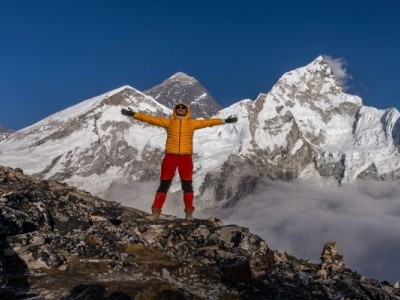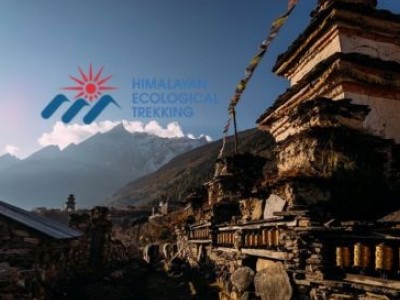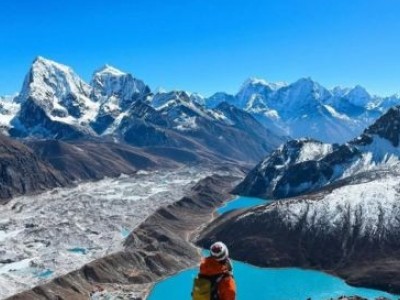Types of Accommodation Available
Teahouses on the Manaslu Circuit
Throughout the Manaslu Circuit, teahouses are the backbone of the accommodation network. These family-owned establishments provide basic but comfortable lodging, with shared areas for dining where trekkers come together, swap stories, and eat hearty meals. Most teahouses offer simple twin-bedded rooms with basic bedding and shares bathrooms.
Teahouses become more standardized after Jagat, and more establishments begin to pop up in villages like Namrung, Lho, and Samagaon. The typically offer basic dining rooms with wood burning stoves, which provide for a warm and communal experience on cold mountain evenings. The standard of accommodation is still basic, but the culture and hospality of local families who run these teahouses provides for an authentic mountain experience.
Lodges Along the Trekking Route
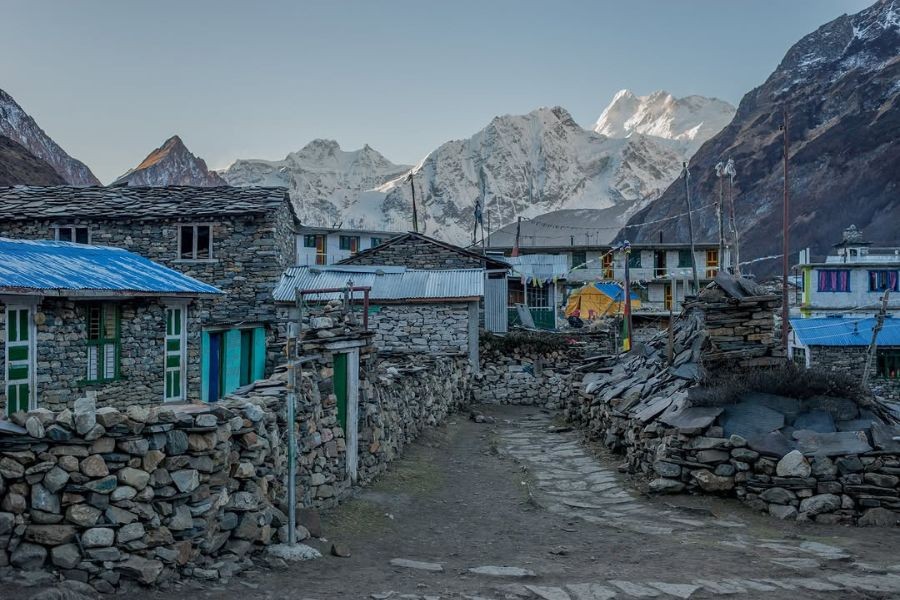
Standard tea houses or lodges on the Manaslu Circuit offer slightly better facilities than basic tea houses with a better condition of rooms and food. Most of the Manaslu trek lodges do offer private rooms with attached bathrooms in some places, but it is still common to share facilities at higher altitudes.
The basic lodge has all of the essential mountain attributes while also providing a greater level of comfort. Accommodation can include dorm style or multi-share, private rooms, or rooms with views of the mountains. Basic facilities for eating and drinking coffee, and tea and the toilet block. In some locations, such as Larke Pass, they sometimes provide a charging point for lights and electric plugs, but this basically remains for living in the lodge. The lodge experience enables you to have important mountain accommodation combined with a social experience when meeting fellow trekkers and local hirepers.
Homestays in the Manaslu Region
Homestays in the Manaslu area of Nepal provide the ultimate cultural experience available on the circuit. In homestays, local families, as a second source of income, open their homes to trekkers, share traditional meals, and stay connected with who they are through local mountain life. Homestays provide simple rooms in family compounds, share meals with hosts, and offer the opportunity to partake in local customs.
Homestays work well in villages like Namrung, Lho, and other recent settlement communities where families still live a traditional life way. Guests stay in basic rooms (with local bedding), share a bathroom with the host family (or compound families), and enjoy the long night of culture and camaraderie. For trekkers who are culturally curious and want to connect with the traditional culture of the mountains, homestay experiences are very meaningful.
Food and Lodging Facilities
Food and lodging on the Manaslu trek largely consists of traditional Nepali food and some options from around the world at the larger villages. Most menus will consist of variations of dal bhat (rice and lentils), momos (dumplings), noodle soups, and simple pasta dishes. On the way up you might find yak cheese, traditional breads, and butter tea as you get deeper into the mountains.
Food hygiene will vary from lodge to lodge and newer lodges will have more established safety practises. Although the portion sizes are usually good for trekkers to fill up after a long day, higher up the mountain varies in convenience and choice. Menus will comprise mostly of local ingredients and you may pay premium prices for imported items due to transport.
Boiled water from lodges, water purification tablets and purchasing bottled water are the common ways to maintain water intake. Most teahouses will offer hot water for drinking and basic washing needs. Trekking some water purification methods is common practise, however one should prepare their itinerary budget for paid, drinkable water.
Accommodation by Major Stops on the Trek
Soti Khola & Machha Khola
The teahouses in these lower elevation villages provide basic but acceptable accommodation with simple rooms and shared facilities. By starting in the lower elevation villages, trekkers receive basic, if not complete, facilities before continuing to more remote area. The typical features are basic beds, communal dining, and shared toilet block.
Jagat & Deng
Jagat's importance as a trekking checkpoint, along with several lodge options make it stronger facilities than lower elevations. Deng Village has fewer room choices, but they maintain adequate standards for the needs of trekkers. Both towns have teahouses with dining areas and basic room facilities.
Namrung & Lho
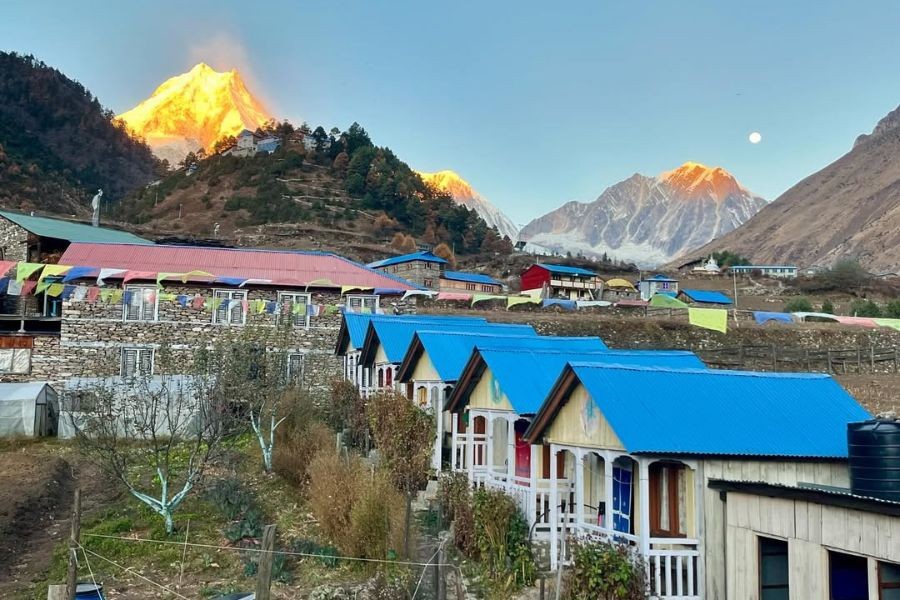
The teahouses in this culturally rich area of the route, have some of the best Manaslu Circuit teahouses. Namrung Village has a number of good choices for lodging with spectacular mountain views while Lho has traditional stone houses that are now relatively comfortable lodges for trekkers. Both towns can offer insight into the culture and opportunities for acclimatization stays.
Samagaon & Samdo
Samagaon is the largest village on the circuit with multiple accommodation options, from standard teahouses to reasonably comfortable lodges. It is an acclimatization stop with existing infrastructure. Samdo has less options but has sufficient amenities for trekkers preparing for altitude.
Dharamsala & Larke Pass Area
Dharamsala is the most basic but sufficient accommodation, it is before the challenging Larke Pass crossing. The facilities are basic for the remote area with simple rooms and communal facilities. The higher elevation stop was developed to provide shelter and meals rather than to provide comfort.
Bimthang & Tilije
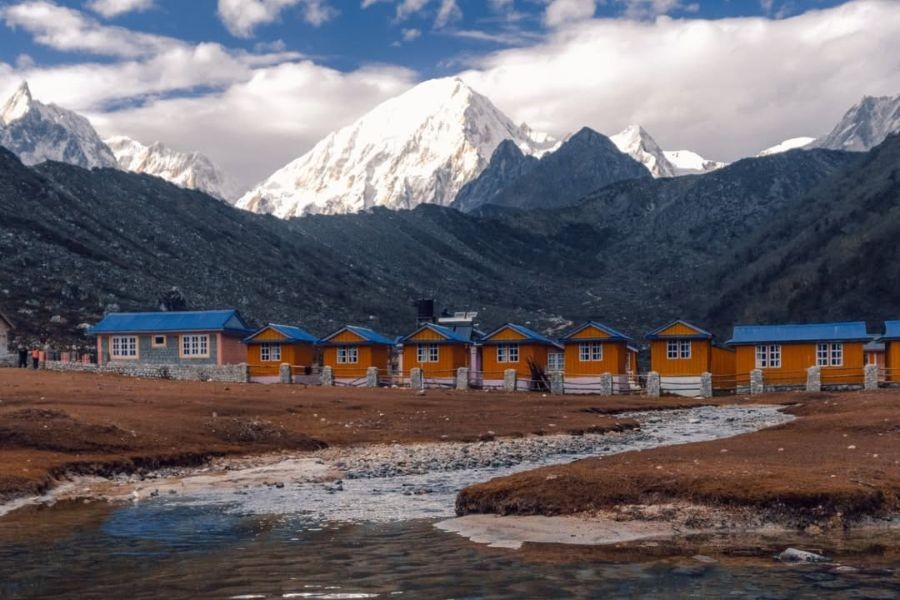
Both villages provide welcome sight after crossing Larke Pass, as they have more comfortable accommodations and decent amenities. Bimthang has an several options to stay with decent amenities, while Tilije offers less but still adequate accommodations as trekkers continue their descent to the Annapurna region.
Accommodation Cost on the Manaslu Circuit Trek
The cost of lodging on the Manaslu trek can vary significantly depending on location, season, and standards of accommodation. The basic tea house rooms will generally cost between $5-15 USD per night, but is often increasing from altitudes and peak season's. Private rooms are usually significantly higher than shared accommodation.
Food costs will comprise a large section of your daily expenses, ranging from basic meal to elaborate meal, from approximately $3-8 USD for each meal. Dal Bhat meals are often cheaper than imported foods or more elaborate meal. Remote areas will charge more, but these higher prices are the result of the logistical costs of transportation to remote locations, plus limits on supply and not being able to stock traditional supplies.
Cost fluctuations include demand, season, accessibility by current supply routes, and quality of accommodation. The two main trekking stats are within October-November and March-May, which drive prices up, especially around important holidays but the extreme rainfall and winter seasons may allow for limited services at lower prices. Peak or higher altitudes will have a hard costs associated by distance and operating costs related to weather seasons.
Comfort Levels and Limitations
Basic amenities where you will sleep while trekking on the Manaslu Circuit will include shared toilets, dining areas, and simple bedding. Hot water for showers is available from time to time and varies from place to place, with some establishments charging for hot water. Most villages are powered by electricity, and it can be intermittent.
Some of the larger villages offer Wi-Fi, but the quality of the connection is poor and can vary widely. Although some places offer charging for electronic devices, you will have to plan around and you may be charged to charge your devices. The heating is generally a wood stove in a communal area; the trekkers accommodation areas are usually unheated.
Seasonal conditions can challenge the level of comfort you will have. In winter, extreme surroundings may lead to a severely reduced quality of life and limited amenities. In peak season, crowded conditions may limit accommodation options. The quality of bedding and blankets varies from place to place, with most places offering basic blankets and requiring trekkers to bring sleeping bags for maximum comfort during their stay.
Tips for Choosing and Booking Accommodation
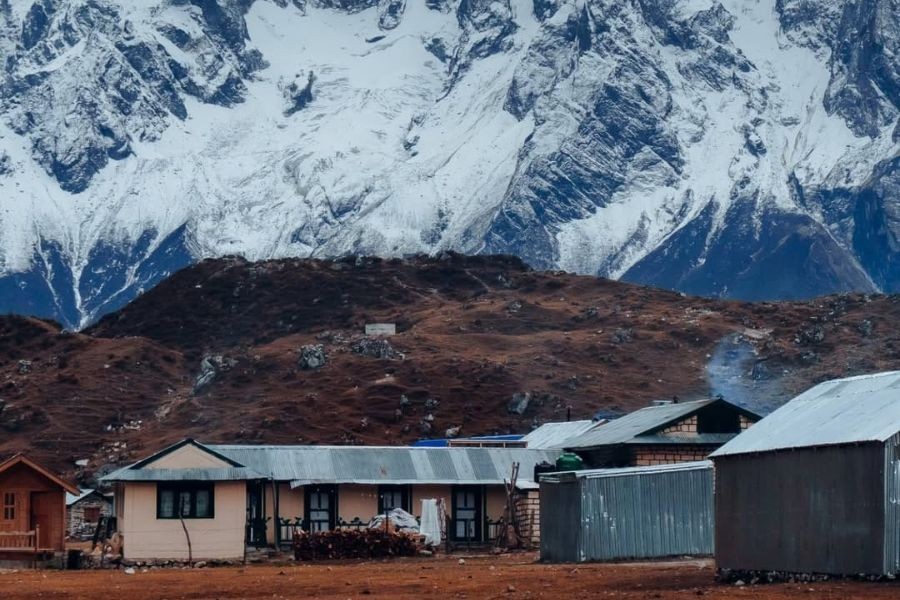
Recommendations for accommodation guide for the Manaslu trek discuss advanced planning through a reputable local company. While there is no reason not to walk-in to accommodations, planning ahead through recognised trekking companies will provide better options and an easier experience on logistics during the trek.
Booking ahead is crucial for preferred accommodation during the busy trekking season to secure minimum disappointment. You will have options for accommodation when working with experienced local companies like Himalayan Ecological Trekking Pvt. Ltd because you are guaranteed they have established relationships with lodges and a reliable booking schedule.
Inquire Now: [email protected]
Expert Consultation: WhatsApp: +977 9851006023 (Bikesh)
In the recommended gear for your plans for comfort, you will need a sleeping bag rated for mountain conditions, personal hygiene items, portable charging devices, etc. Trekkers should pack toilet paper, hand sanitizer, and basic medical supplies to ensure a more comfortable and healthy trip.
Comparison with Other Trekking Routes
Lodging options along the Manaslu trekking route are notably different than those found along the higher trafficked Everest and Annapurna circuits. Both the Everest and Annapurna routes have spoiled trekkers with more luxurious options, including heated rooms and a wider selection of food; whereas, the Manaslu area is rustic and authentic with basic facilities that are more than adequate.
All of these cultures offer fewer accommodation options, but more than make up for it with authentic cultural interactions as well as untouched, unencumbered natural settings. Unlike the busy commercialized byways of the well-travelled routes, the hotels and lodges along the Manaslu Circuit trek offer tradition mountain hospitality and real relationships with locals.
Some of the advantages unique to Manaslu include fewer people on the trails, differences in authentic cultural interactions, and amazing unspoilt wilderness scenery. The disadvantages include fewer options for facilities, less comfortable and more basic offerings, and perhaps the biggest difference is the higher level of logistical management and planning required. You will want to plan ahead and have expectations in check.
FAQs
What is the average cost per night for accommodation on the Manaslu Circuit?
Accommodation cost Manaslu trek typically ranges from $5-15 USD per night for basic teahouse rooms, with prices varying by location, season, and facility standards.
Are bookings necessary for Manaslu Circuit accommodation?
While walk-in options exist, advance booking through reputable local trekking companies ensures better accommodation options and smoother logistics, especially during peak seasons.
What amenities can I expect in Manaslu Circuit teahouses?
Manaslu Circuit teahouses typically provide simple rooms with basic bedding, shared dining areas, communal toilet facilities, and limited hot water services. Electricity and Wi-Fi availability vary by location.
How do homestays differ from lodge accommodation on the Manaslu Circuit?
Homestays in the Manaslu region offer authentic cultural experiences with local families, featuring shared meals, traditional accommodations, and opportunities for cultural exchange, while lodges provide more standardized trekking facilities.
What should I pack for comfortable accommodation on the Manaslu Circuit?
Essential items include a quality mountain-rated sleeping bag, personal hygiene supplies, toilet paper, hand sanitizer, portable charging devices, and basic medical supplies for optimal comfort and health.
Conclusion
The accommodation on the trek experience Manaslu Circuit reflects the region's best efforts to retain authentic mountain culture while offering the basic services needed by trekkers. While the level of facilities is far more basic than commercial trekking routes, the great local hospitality and breathtaking natural magnificence provide unforgettable memories, which are far greater than comfort.
To successfully Manaslu Circuit trek requires a realistic expectation of the accommodation level combined with an appreciation for authentic cultural experiences. The lodges, teahouses and homestays along this remarkable trekking route provide windows into traditional Himalayan life, while promoting local communities through responsible tourism practices.
Using advance planning, working with experienced local operators and an attitude towards accommodation that is flexible, will ensure that you have a rewarding and memorable trekking experience in one of Nepal's most spectacular and culturally rich regions.
.jpg)




